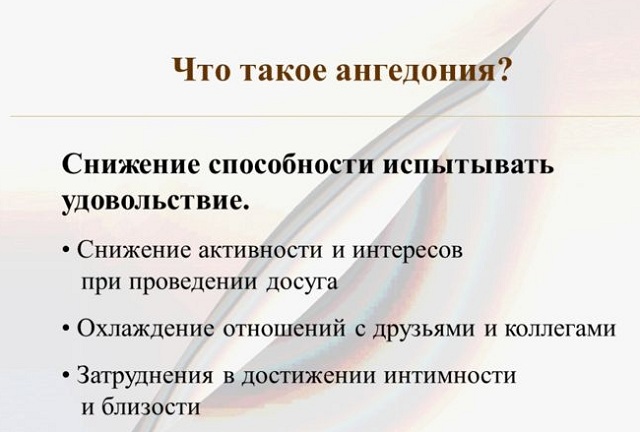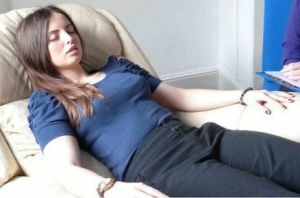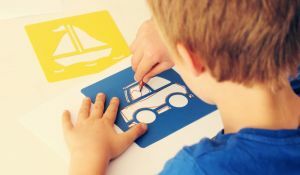 Despite the rather high level of modern knowledge and innovative research methods that are available to neuropathologists, dyspraxia, like its treatment, is still a rather complex issue for specialists in this field of medical practice.
Despite the rather high level of modern knowledge and innovative research methods that are available to neuropathologists, dyspraxia, like its treatment, is still a rather complex issue for specialists in this field of medical practice.
For all aspects of health are inextricably linked not only with the level of development of society in terms of hygienic, but also in terms of social.
Therefore, to illustrate the line: socium - children - neurology - dyspraxia it is useful to turn to the familiar to all children's poem.
Lyrical digression with practical meaning
Here is his simple plot: on the bank of the river, in which a large red-blue rubber ball floats, little Tanya sobs.
Why is she so inconsolable? She pities the ball? No, she is terrified of herself.
And now it's time to "look behind the scenes".For the nursery rhyme is silent about many things.
About a skinny nervous tannic mother with shaking hands, which is interrupted by sewing at home. Because for her to enter the service means to lose the house. She is forced to be his watchman, because the husband, even though he works, drinks his salary and things from home.

From him, an alcoholic, Tanya was born. And although the condition for the birth of a child was a categorical requirement to the future father "tie", his charm "green snake" was stronger.
As a result, after nine months of continuous tears of her mother, Tanya was born to grow up as a weak and shy girl in a house with a barely concealed poverty, and where the question: what to buy a girl for her birthday causes panic.
Doll? Expensive. Dress? Especially.
And now bought a large elegant, but cheap rubber ball. And now Tanya is scared to return home, where his mother once again sweep her with a towel and call it "armless."
For it was Tanya who was unable to catch the "expensive" ball thrown by her children in the game.
"Armless", "legless", "legs - like hands, and hands - like rakes."These and many other such teasers are often heard in their address by children suffering from dyspraxia( a clumsy child syndrome) from normal children.
Why are the legs like hands? They are constantly clinging to everything. And the hands are like rakes, with which you can draw the earth, but you can not grasp and grip firmly, nor catch the thrown into the air, nor do some subtle action.
To say that the child has no hands and feet at all, they can not - they simply "do not obey".For different reasons.
For reasons grieving to the impossibility. ..
Including the causes of the past:
- pathological, often alcoholic heredity ;
- the state of the psyche of the future mother , which undergoes regular stresses leading to hypoxia of the fetal brain, and then to the birth of the baby before the term - 31-36 weeks, or later - at 41-42 weeks.
And also for reasons in the present time. In the form of tension of the psychological situation surrounding the growing child in the family and society.
The main ones were:
- pressure of parental discontent;
- teasing peers, often just looking for a "reason to neigh".
 Because a dyspraxic child is not mentally retarded, the absence of a visible result from the efforts made by the body causes in him deep disappointment with despair of his own awkwardness.
Because a dyspraxic child is not mentally retarded, the absence of a visible result from the efforts made by the body causes in him deep disappointment with despair of his own awkwardness.
There are only two ways out of the situation: either to retire somewhere where no one will find you( including in autism, which happens in 5-6 years, when dependence on parents is complete), or in despair, wide-open eyes, rush to the offender.
This child has a desire to rush to where it is dangerous - but there is a hope to become "like everyone else".Where you can change your status, deserving the glory of "prušuschego ahead" buzotera-rebel-loner.
The most frequent finale - children become favorites of the public and a guarded environment amusing rags and hamovatymi clowns.
But this is later, at 9-11.
Species and manifestations depending on age
In kindergarten, the main sign of dyspraxia is the impossibility of automatic activity:
- verbal( speech, oral) - with the arrangement in the proper order of words in the phrase or if necessary other verbal processing;
- motor( propulsion) - when dealing with things.
Also such a child is characterized by:
- constant drops for no reason;

- by breeding "swine flu" while eating;
- frequent loss of things;
- confusion in the order of the action;
- with difficulties with a retelling of what was seen and with an understanding of the construction of things;
- confusion with left and right shoes;
- by the quick loss of the thread of conversation, by the inability to fulfill simultaneously two requirements of the educator at once.
In the primary classes, signs of dyspraxia of ophthalmic, or oculomotor, signs of inability to steadily submit to the will of the direction of eye and eye movements are attached. Instead of following the text when reading through the eyes, the child "shuttles" his head to the left and to the right.
For all its abundance, the symptoms of motor disorders in children are reduced to just a few types of dyspraxia:
- kinetic with the inability to control movements that require fast tempo( when running, jumping);
- kinesthetic - everyday search for articulation;
- is an ideal with inability, both to comprehend the action before its practical fulfillment, and the difficulties experienced in its implementation;
- expressive with the inability to express the facial expressions of the emotions experienced;
- deambulatory with inability to change the rhythm and mode of movement( from walking on heels to walking on toes);
- constructive with the difficulty of calculating motion, starting from the three-dimensionality of space( perceived as two-dimensional).
Schoolchildren with dyspraxia have difficulty with writing legible and clear, with learning to read. They get tired faster than their classmates, although tasks perform slower than them.
When performing movements, they often feel afraid not to cope with "stumbling" hands and feet, especially in games and dances.
Any criticism from the outside makes them desperate and despondent, reducing the already low self-esteem.
At the break, they stand alone by the window, keeping away from the ridicule of their peers, who are able to bring the suffering of dyspraxia both before aggression, and before depression and missing classes.
With a combination of pathology with Down syndrome or Asperger, with autism or cerebral palsy, there is no question of training in society at all.
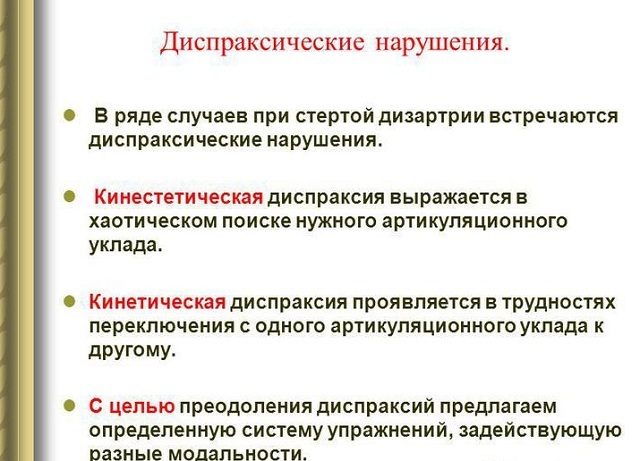
To the warmth of the native hearth
What can the parents of the disease, which is manifested in the child by constant oppression, excessive stubbornness combined with a complete lack of understanding of the direction for applying effort to movement, resentment, shyness and fearfulness to "persecution", with hypersensitivity to touch, oppose?
Despite the knowledge that the child is not susceptible to outside influences and is likely to remain as it already exists, parents should not give up, resigning themselves to the status quo.
First of all, you should fix. .. yourself, concentrating as much as possible on the current moment, and not on your idea about it.
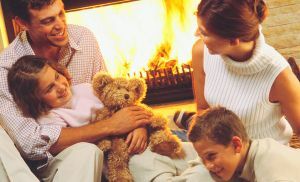 Prepare your hands, mind and heart for the upcoming painstaking and hard work. For, only seeing and feeling the confidence in him of the parents and their willingness to help, the child will be drawn to the heat of the home, and not go out into the street, disappearing somewhere in the park for days.
Prepare your hands, mind and heart for the upcoming painstaking and hard work. For, only seeing and feeling the confidence in him of the parents and their willingness to help, the child will be drawn to the heat of the home, and not go out into the street, disappearing somewhere in the park for days.
With a soft persistence and boundless patience, looking more attentively at the activities that entice and distract the child from his misfortune, to his useful addictions, it is worth starting to support them in every way and stimulate them.
It does not matter if it will be:
- collecting postcards;
- attempt of drawing, drawing or application;
- "picking" in the garden ground.
Even a negative result is unimportant, and the process itself and the strengthening of the child's faith in his. .. not unlimited, but - opportunities are important!
Five games with a child for speech development:
Professional help is needed by
Without it, parents simply do not have the ability to maximally prepare a child for the future life without their help and care. For the life of parents is not eternal, once they have to part with them.
Therefore, the application for professional help should not be postponed.
First of all, the neurologist examines the possibilities of the patient, observing the performance of simple actions such as jumping, walking different styles, building from cubes, copying the simplest drawings and stringing large beads. For it is necessary to differentiate dyspraxia from another similar neurological pathology.
Then the program of correction of the most expressed pathology is made: 
- of thinking - with the purpose of its systematization and organization;
- speech - allowing to prevent both the delay in the development of speech, and the deterioration in the quality of speech already available;
- movements - with the training of complex movement by its initial "dissection" into separate "pieces" - mini-movements followed by merging into the finished gesture.
In the implementation of this program, the contribution to the rehabilitation process of a speech therapist, ophthalmologist, school psychologist is invaluable.
With a view of the future
The future of the child-dyspractic depends on the degree of his preparedness for independent life, both thanks to self-sacrificing parental love and patience, and thanks to the very direct participation in his destiny of the neurologist and other physicians of other specialties.
With a slight severity of the condition, some of its manifestations can be significantly smoothened.
In the case of the "unavailability" of the patient due to deep-seated pathology, or its combination with another disease, as well as late treatment for neurological care, the child remains so for all life to come - awkward, subject to doubts about one's own value and the influence of someone else's opinion.


